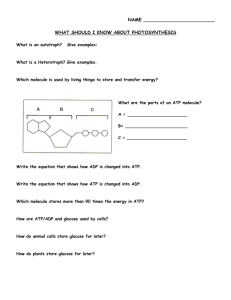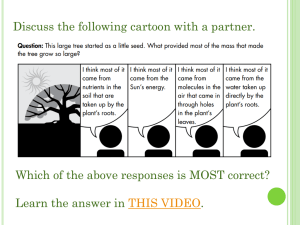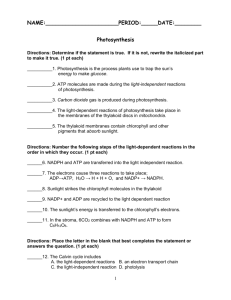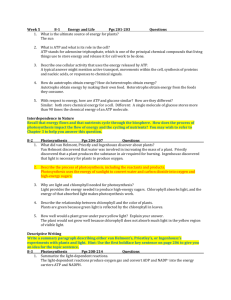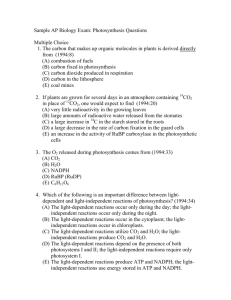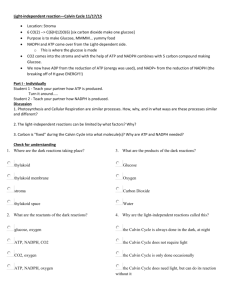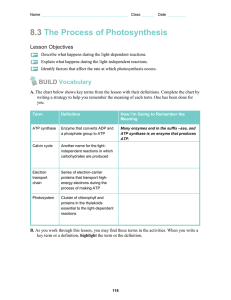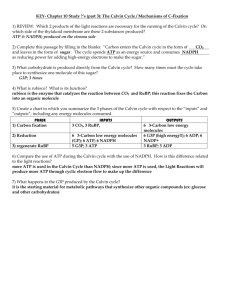Photosynthesis Exam & Chloroplast Structure Activity
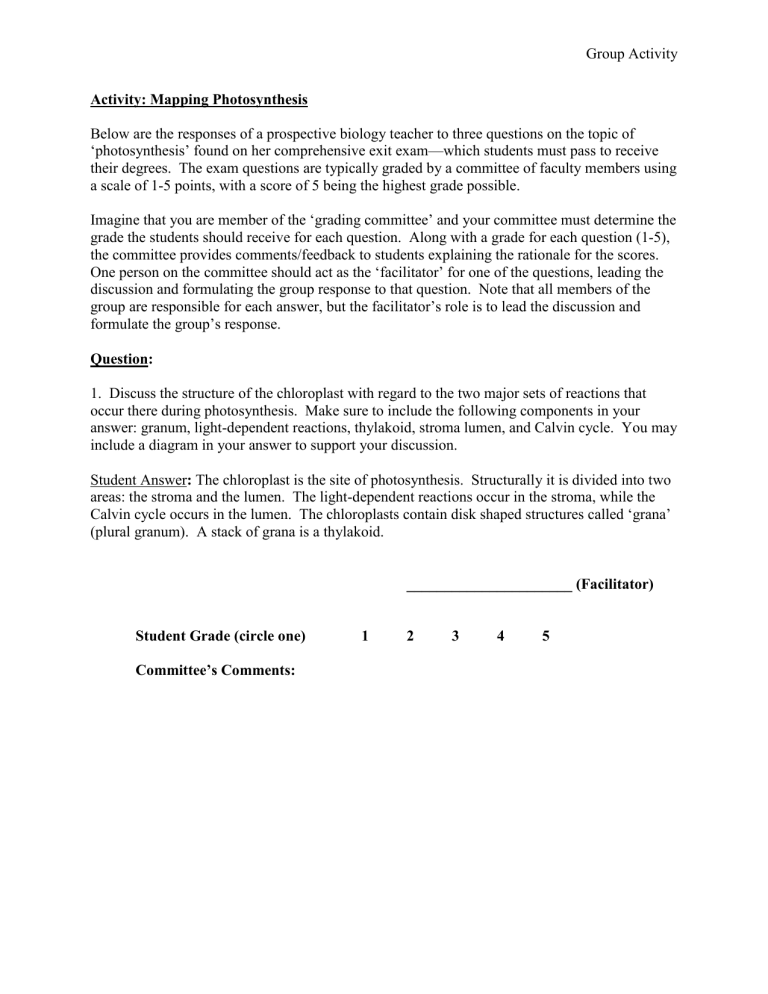
Group Activity
Activity: Mapping Photosynthesis
Below are the responses of a prospective biology teacher to three questions on the topic of
‘photosynthesis’ found on her comprehensive exit exam—which students must pass to receive their degrees. The exam questions are typically graded by a committee of faculty members using a scale of 1-5 points, with a score of 5 being the highest grade possible.
Imagine that you are member of the ‘grading committee’ and your committee must determine the grade the students should receive for each question. Along with a grade for each question (1-5), the committee provides comments/feedback to students explaining the rationale for the scores.
One person on the committee should act as the ‘facilitator’ for one of the questions, leading the discussion and formulating the group response to that question. Note that all members of the group are responsible for each answer, but the facilitator’s role is to lead the discussion and formulate the group’s response.
Question:
1. Discuss the structure of the chloroplast with regard to the two major sets of reactions that occur there during photosynthesis. Make sure to include the following components in your answer: granum, light-dependent reactions, thylakoid, stroma lumen, and Calvin cycle. You may include a diagram in your answer to support your discussion.
Student Answer : The chloroplast is the site of photosynthesis. Structurally it is divided into two areas: the stroma and the lumen. The light-dependent reactions occur in the stroma, while the
Calvin cycle occurs in the lumen. The chloroplasts contain disk shaped structures called ‘grana’
(plural granum). A stack of grana is a thylakoid.
______________________ (Facilitator)
Student Grade (circle one)
Committee’s Comments:
1 2 3 4 5
Group Activity
Question:
2. Summarize the events of the Calvin Cycle, highlighting the significance of following molecules in the metabolic pathway:
Glucose
Ribulose 1,5 bisphosphate (RuBP)
ATP
3-phosphoglycerate (PG)
NADPH
Glyceraldehyde 3-phosphate (G3P)
CO
2
Student Answer: The Calvin cycle is a complex metabolic pathway that results in the production of glucose (and other sugars). Ribulose 1,5 bisphosphate can be thought of as the starting material. Carbon dioxide is combined (fixed) with RuBP forming a six carbon molecule that is unstable and breaks down into 3-phosphoglycerate (3PG). 3PG molecules are phosphorylated
(have energy in the form of phosphate added to them from ATP) and reduced (by NADPH) producing Glyceraldehyde 3-phosphate (G3P) which is phosphorylated (has energy in the form of phosphate added to them from ATP) producing RuBP which is put together to make glucose.
______________________ (Facilitator)
Student Grade (circle one)
Committee’s Comments:
1 2 3 4 5
Group Activity
Question:
3. Discuss the products of the light-dependent reactions and the significance of these materials to the production of glucose:
Student Answer: The light-dependent reactions are a complex metabolic pathways in which charged particles (protons and electrons from water) are separated, producing an electrochemical difference on two sides of a membrane. Electrons are stripped from water molecules and are used to produce the electrochemical difference. In this process, ATP and NADPH and oxygen are produced. The NADPH is cycled back into the light-dependent reactions while the oxygen and ATP enter the Calvin Cycle.
______________________ (Facilitator)
Student Grade (circle one)
Committee’s Comments:
1 2 3 4 5


